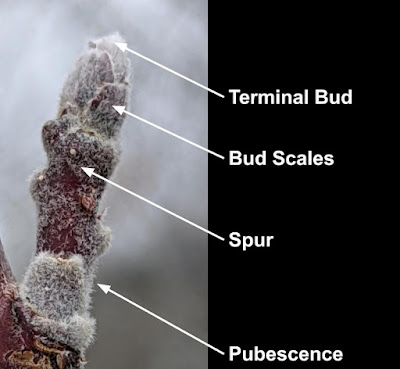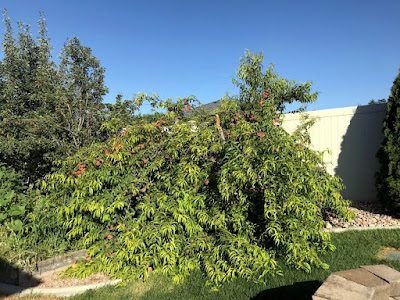What is the Apical Bud?
I would like to start this article with a riddle:
When I pull a cart I go real slow, but with "Au" instead of "O" I'll decide how long a branch will grow. What am I?
Keep reading to find the answer to this riddle.
The apical bud on a plant is the bud at the very tip. You might be thinking, "What does this have to do with fruit trees?" Well, understanding this part of a fruit tree's anatomy is very important and knowing more about it could make the difference between a bountiful harvest and your fruit trees not producing anything.
Did you catch the answer to the riddle above? When an Oxen pulls a cart, it goes real slow, but if you spell Oxen with an "AU" instead of "O", Auxin will decide how long a branch will grow.
Ok, so it's not perfect, but you get the gist.
For more information about the care and pruning of fruit trees, please subscribe here:
So now you know what the apical bud is, how it applies to apples and stone fruit, and how this bud affects a plant... but wait, there's more!
What happens to a plant when the apical bud is pruned out?
Have you ever pinched back your tomato plants or houseplants that are getting too leggy? When you pinch back a plant you are removing the apical bud, which temporarily removes the hormonal affects of the apical bud. The result is that your plant will fill out and become more "bushy".
I like to use a business as an example. When the board of directors decides to oust the CEO of a company, what happens? The CFO, COO, and the CMO all start competing for the CEO position. This is exactly what a plant will do. The lateral buds closest to the pruning cut will all start to elongate and begin producing Auxin.
When referring to trees, we don't pinch them back because they are woody and you would need some pretty tough finger nails to pinch back a fruit tree branch. We use the term tipping which can be done with a sharp pair of pruning shears. When you tip back you fruit trees, they will respond like your tomatoes and send out several new branches at each cut.
Tipping fruit trees is also how you can keep a tree from getting too tall. No one wants to rent a boom lift every time you want to harvest apples. You can learn more about maintenance pruning, and how to keep you fruit trees at any desired height by reading Lesson 7 in our free 9 part fruit tree pruning course.
I mentioned this earlier, but it bears repeating. When pruning stone fruit, it is imperative that you aggressively tip back each and every branch. This will accomplish two things. First, tipping back branches will remove several lateral buds and lighten the fruit load so that your branches don't break under all that weight. Second, tipping branches will stimulate new branches that will become productive the following season. Stone fruit produce fruit on last year's new growth.
For more information about stone fruit pruning follow these links:
How to Prune Sweet Cherry Trees
The opposite is true when referring to Pome fruit. The apical bud is where the fruiting occurs. This doesn't mean that you can't tip back your Pome fruit, you just need to know the difference between a water sprout and a spur.
Thanks for reading! If you would like to learn more about the care and pruning of fruit trees, please browse our 100+ fruit tree articles here, join our Backyard Fruit Growers Facebook Group, and take our free Fruit Tree Pruning Course. Also, please subscribe to our Fruit Pruning YouTube Channel.


.jpg)



.jpg)






Thanks Russ, pruning fruit trees is a passion of mine. And building my own little orchard is a joy. Learning a little of the control with a little late summer pruning is beginning to make sense to me through articles like this...
ReplyDeleteSo glad to help! Growing your own fruit really is enjoyable!
DeleteDear Russ, thanks for explaining;)
ReplyDeleteYou are very welcome!
Delete